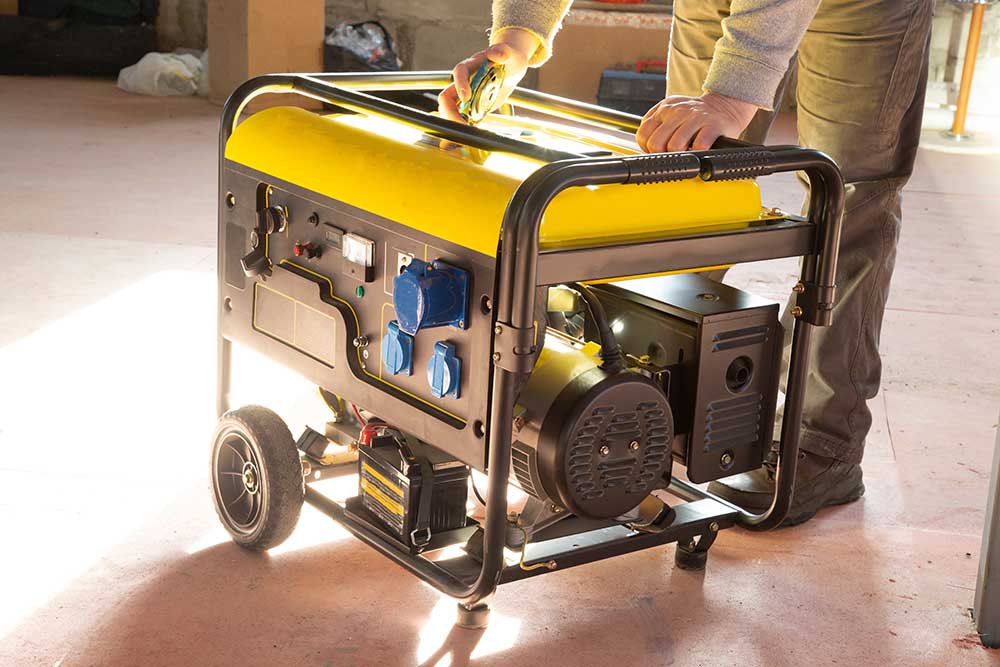In February of 2021, Texas experienced an unexpected cold snap that left millions without power. The extreme weather exposed the state power grid to various energy generation complications. Residents started experiencing issues with water supply, heating, transportation, and other services that made their properties susceptible to damage. Many homes and commercial properties in the area weren’t built for temperatures of this magnitude. They lacked proper insulation and materials to withstand the cold and, as a result, experienced frozen and burst pipes, among other winter-related issues. The unexpected severity of this event thrust the region into national headlines, and Governor Greg Abbott issued a disaster declaration for all 254 counties within the state.
By the 15th of February in 2021, First Onsite was getting a volume of calls that made it clear the Texas office wouldn’t be able to handle this one alone. Thankfully, our national team was called in to offer additional support. Branches from across the country brought knowledge, experience, and extra hands to help damaged properties return to a pre-loss state after property damage. 27 53-foot trailers worth of equipment, approximately 3500 dehumidifiers, 7000 air movers, and 1000 air scrubbers were secured to help our clients with water damage. All equipment was supported by our emergency and temporary power solutions.
The dangers we face without power in colder months are a harsh reality. The Texas Freeze left residents without power and made their properties more susceptible to damage. If you live in an area that experiences colder temperatures, this could easily happen to you.
HOW DOES WINTER WEATHER CAUSE POWER OUTAGES, AND WHAT CAN I DO TO BE READY FOR THEM?
You might find it surprising that you can experience a power outage due to temperature alone. Other factors, such as wind and intense winter storms, are other elements that you have no actual control over. Here are some common ways power loss occurs in the winter months.
- Intense Winter Storms and Ice Accumulation – The heavier the storm, the more likely ice will build up on power lines. The sheer weight of it could make power lines sink or break connections.
- Power Surge – In colder temperatures, the demand for electricity is much higher for everyone in the region, and sometimes demand outweighs supply, causing these grids to short out.
- Strong Winds – Cold winter storms don’t slow down. High winds can cause tree branches, limbs, and other debris to make contact with power lines, causing an outage.
- A Property Damage Incident – Depending on the severity of your property damage incident, the power in your facility could short circuit or just be part of the damage occurring.
Power loss means business downtime, and if you want to avoid this during winter weather, you must plan for your power to be out. If you expect it and you have the right plan in place, you can have the right resources at your disposal to keep your property operating. By connecting with First Onsite before a crisis, we can assess your property, learn about what your specific temporary power needs are, and be stocked and ready to deliver generators that keep your lights on.
WHEN PROPERTY DAMAGE CAUSES POWER OUTAGES
That first cold day, when you can feel winter’s chill, is always a bit of a shock to the system. Seasons can sneak up on you, as do the power issues that are caused by property damage. Many winter-related property damage events can result in infrastructure issues that damage the flow of electricity. Snow or ice melt can create a water damage event that could make direct contact with your electrical infrastructure, causing it to short out. This is why it’s important to be aware of the different types of damage that may occur during the winter season.
Some of the more common events associated with winter property damage are:
- Frozen Pipes
- Ice Dams
- Snow Accumulation
- Overflowing Gutters and Downspouts
These property damage issues can impact your power if not mitigated quickly. Let’s look and offer some solutions for how you can actively work to prevent them from happening to your facility.
FROZEN OR BURST PIPES
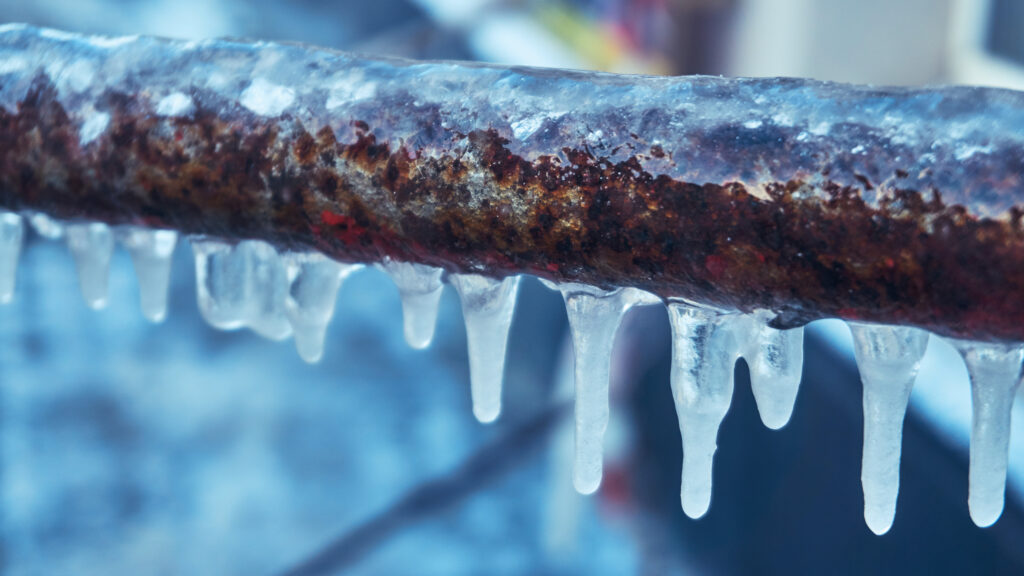
The most common of these issues, and the one we repeatedly have our properties prepare for, is burst or frozen pipes. All it takes is a temperature of 32 degrees for your pipes to be at risk of freezing. If temperatures are currently at or near this temperature, there’s still time for you to act. Here are a few things you can do to keep your pipes from freezing.
- Turn your faucets on to a slow drip – This promotes water flow through your pipes and prevents them from freezing through.
- Open Cupboards and doors to any exposed pipes inside your property – Exposed pipes have greater access to room warmth and are less likely to freeze if temperatures are warmer indoors.
- Insulate Exposed Pipes – Covering your pipes with insulation can offer added protection from colder temperatures. Insulation materials can come in the form of fiberglass, foam, or custom-made insulation blankets (usually made of fiberglass or foam). Be sure to inspect your pipes to determine their overall condition and any specific needs before buying insulating materials.
If temperatures in your area have been known to drop below 32 degrees Fahrenheit, be aware that the risk of a frozen pipe is much more common when temperatures near 20 degrees Fahrenheit. If you are at these temperatures and have not taken precautions, do so now. All it takes at this temperature is 2-3 hours for a pipe to freeze, and the longer you are at these temperatures, the greater the risk to your pipes.
ICE DAMMING & SNOW ACCUMULATION
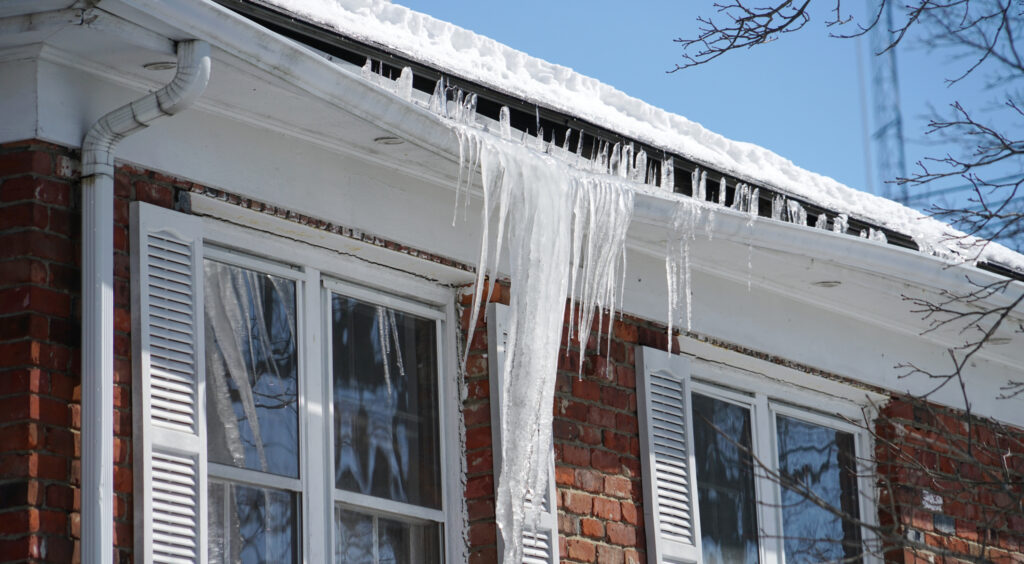
Ice Damming is a cycle where snow buildup on a property’s roof melts and refreezes, creating a layer of ice that works underneath shingles and into the property’s structure. This process tends to occur in areas with heavy snowfall where climates fluctuate from warmer temperatures during the day to freezing temperatures at night. This can also occur in older buildings with bad insulation. The heat inside the structure warms the roof, causing the snow to melt.
Snow Accumulation happens in areas where snowfall happens frequently. This tends to become serious when it piles on roofs and in gutters and downspouts. All it takes is an inch of snow for a tremendous amount of weight to collect on your roof. Approximately 1 inch of dry snow on a 1000 cubic foot roof would weigh 75,00 pounds.
Regularly scheduled maintenance can go a long way in protecting your roof and property from ice dams and snow accumulation. Here are a few steps you can take while considering winter weather.
- Insulate and Ventilate Your Roof – Proper insulation and ventilation for your roof is a huge step toward avoiding an ice damming incident. Proper insulation will prevent heat from exiting your roof incorrectly, while good ventilation will regulate temperatures by letting cold air in and warm air out in appropriate areas.
- Check for Ceiling Heat Leaks – Checking your ceiling for gaps and leaks can also be helpful. Warm air working its way into your attic can warm your roof and cause snowmelt that has the potential to refreeze.
- Clean Gutters and Downspouts – Make sure that your gutters and downspouts are cleaned of debris so runoff from your roof has a place to go. If gutters are clogged, it promotes the formation of ice dams.
- Rake Your Roof – Remove snow from your roof after snowfall with a roof rake. This lessens the overall weight and can support the prevention of ice damming as well.
OVERFLOWING GUTTERS AND DOWNSPOUTS
This bears repeating. Actively check and maintain gutters and downspouts. It is common for leaves, branches, and other debris to build up within your gutters, making it hard for snowmelt and snow buildup to find its way off your roof. If unchecked and maintained, this could create the potential for water damage to your property’s roof, foundation, and walls. This is about getting snowmelt and rain away from your property.
Doing any work on the roof can be dangerous. Make sure that whoever is maintaining your gutters and downspouts is taking proper safety measures. Here are some tips to assist you in cleaning and maintenance in these areas.
- Hose Out Your Gutter – If your water pressure is powerful enough, you can spray debris out of the gutter and move water toward the downspout.
- Manually Remove Debris – Digging into gutters by hand or with a tool like a gutter scoop can ensure that you get everything and don’t miss something that other methods might.
- Identify Potential Hazards – Large branches and other elements that hang over your gutters could potentially cause more debris buildup over time.
- Maintain Gutters and Downspouts Year-Round – buildup within gutters and downspouts occurs every season, so it is important to continually keep an eye on potential buildup.
SECURING TEMPORARY POWER WITH FIRST ONSITE
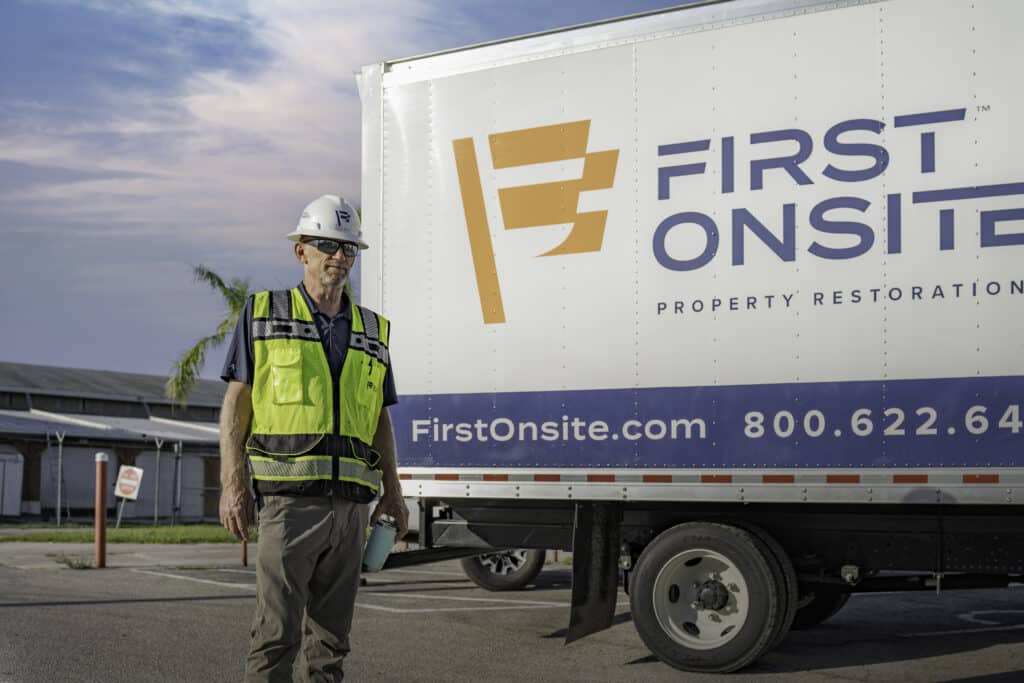
First Onsite teams across the country are assisting properties with temporary power when it’s needed. We believe that to serve you with specific solutions, connecting ahead of a power loss is vital. Here are three key pieces of information you will need to provide when you call.
- What type of voltage does your facility run on?
- What kind of amperage does the building require?
- How far does the generator need to sit from the electric panel?
Having these answers solves a few key factors that will determine the appropriate needs, and this is as beneficial to you as it is to us. So, what do these answers solve?
- Knowing the correct amperage and voltage will determine the generator we will provide. Generators that provide more or less power than you need could be damaged and more costly for you.
- Knowing the distance between our generator and your electric panel will let us know how long our cables need to be to appropriately power your facility, and longer cables mean more money out of your pocket.
- If we don’t accurately acquire the answers to those questions, there’s a strong chance we’ll arrive with the wrong equipment, stalling us from providing you with power.
Delivering this information to us will improve our ability to serve you in a timely manner. Once all this information is received, your First Onsite representative will deliver a scope of work that gives you a cost estimate before labour and gas. Once you have signed this form, First Onsite will be ready and prepared to support your temporary power needs.
A FINAL NOTE ON PREPARATION
It’s easy to defer work that doesn’t seem to have a benefit at the moment. Being proactive takes time from your day-to-day tasks, but the truth is that your operations are still in motion. This is a time when you can afford to define what you will need in times of crisis. Don’t find yourself wishing you had done the work when your business is down. Maintain your property before the cold winter months and connect with us to lock in a plan that keeps the power on throughout the season. As your disaster recovery and property restoration partner before and after times of crisis, we are here to make your life easier, providing emergency support 24/7, 365 days per year. You can request our services at any time.
CONTACT FIRST ONSITE FOR YOUR POWER NEEDS!
Similar Posts
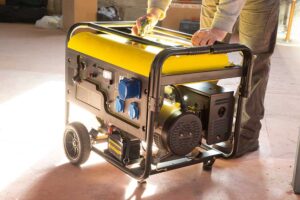
Understanding Power Needs This Winter
In February of 2021, Texas experienced an unexpected cold snap that left millions without power. The extreme weather exposed the state power grid to various energy generation complications. Residents started experiencing issues with water supply, heating, transportation, and other services that made their properties susceptible to damage. Many homes and commercial properties in the area…
